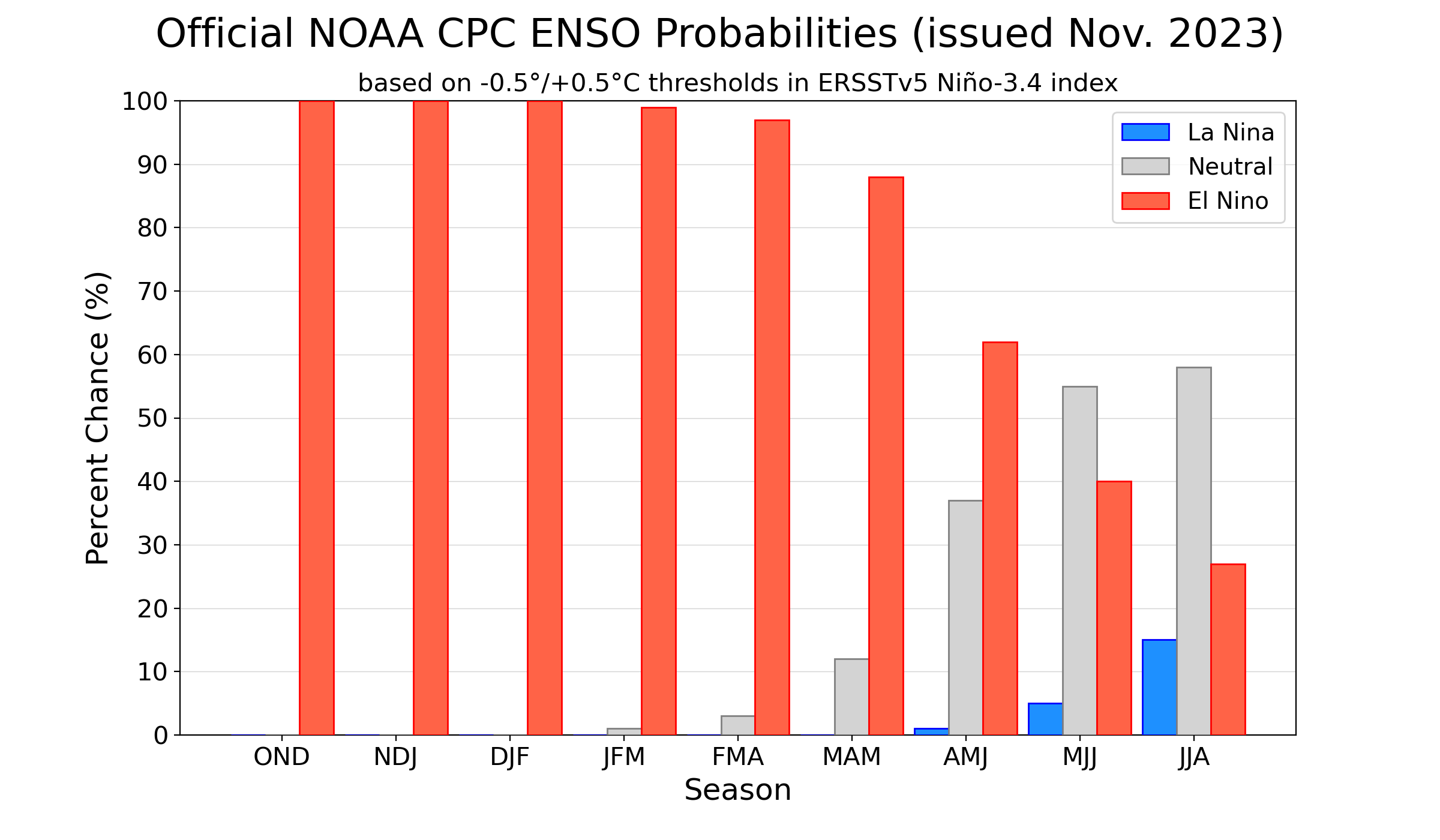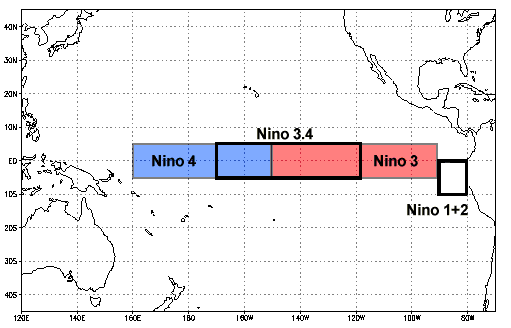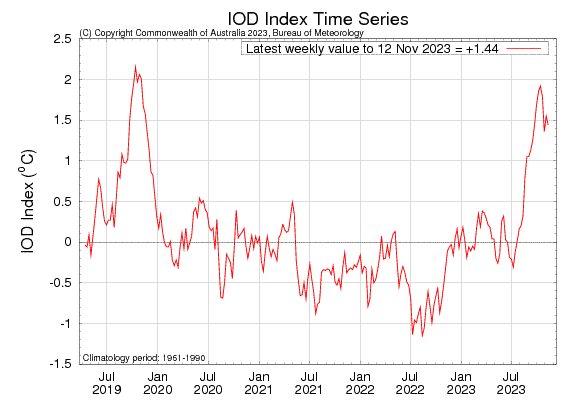Attributable to El Nino, the latest victim, as per BBC News is Panama’s drought. The El Nino weather pattern has contributed to the severe drought, says the ‘Panama Canal Authority’ (ACP). The Panama Canal greatly reduces the time, distance and cost of shipping to travel between the Atlantic and Pacific Oceans. In recent months, ACP has imposed various passage restrictions to conserve scares waters.
El Nino impact includes wetter than normal conditions in tropical latitudes of North America and more intense winter-time storms. It also leads to below-normal hurricane / tropical storm activity in the Atlantic. However, their strength does not get compromised by El Nino event.

ENSO: During the last four weeks, +Ve changes in equatorial sea surface temperature anomalies were observed east of the Date Line (180°-130°W), while negative changes were evident in the eastern Pacific Ocean and west of the Date Line. Nino 3.4 region, the marker of Oceanic Nino Index (ONI) remains steady at +1.8°C for the 2nd consecutive week and the highest value since March 2016. This was preceded by a ‘super’ El Nino of southwest monsoon 2015, spilling over to the Northern Hemispheric winters of 2016.



The Southern Oscillation Index (SOI) has been very volatile this season with a high degree of unpredictability. The index achieved the season’s high of -1.3 in September 2023 and was downgraded to mere -0.5 in Oct 2023. A further drop is likely during November 2023 and may even reverse sign at fag end of 2023.

IOD: The positive Indian Ocean Dipole event continues. The weekly index value for the week ending 12 Nov 2023 was 1.44°C, a marginal drop from its previous mark of 1.55°C on 05 Nov 2023. Positive IOD above the threshold of +0.4°C has been recorded for 13 consecutive weeks, since 21 Aug 2023. Therefore, it exceeds the stipulated requirement of 8 weeks to qualify for a positive IOD event.
The eastern pole of IOD remains much cooler than the western half of the tropical Indian Ocean. This gradient is termed DMI to rate the degree of IOD. Sharper values of DMI denote strong ocean/atmosphere coupling and has a large bearing on the climatic conditions.

MJO: The Madden Julian Oscillation is currently weak. However, it is likely to gain amplitude while traversing eastward across the Western Pacific. The transitory pulse will shift closer to Indian Ocean in Phase-2 by last week of November 2023. This may trigger increased northeast monsoon activity during later part of November.
Following an El Nino event, the ensuing winters of north and east India are generally warmer than average. Winter rains are also decent enough in the plains of North India. El Nino event is likely to peak in Nov-Jan and returning to ENSO neutral by May-Jun 2024. It does sound good for the next monsoon 2024.


